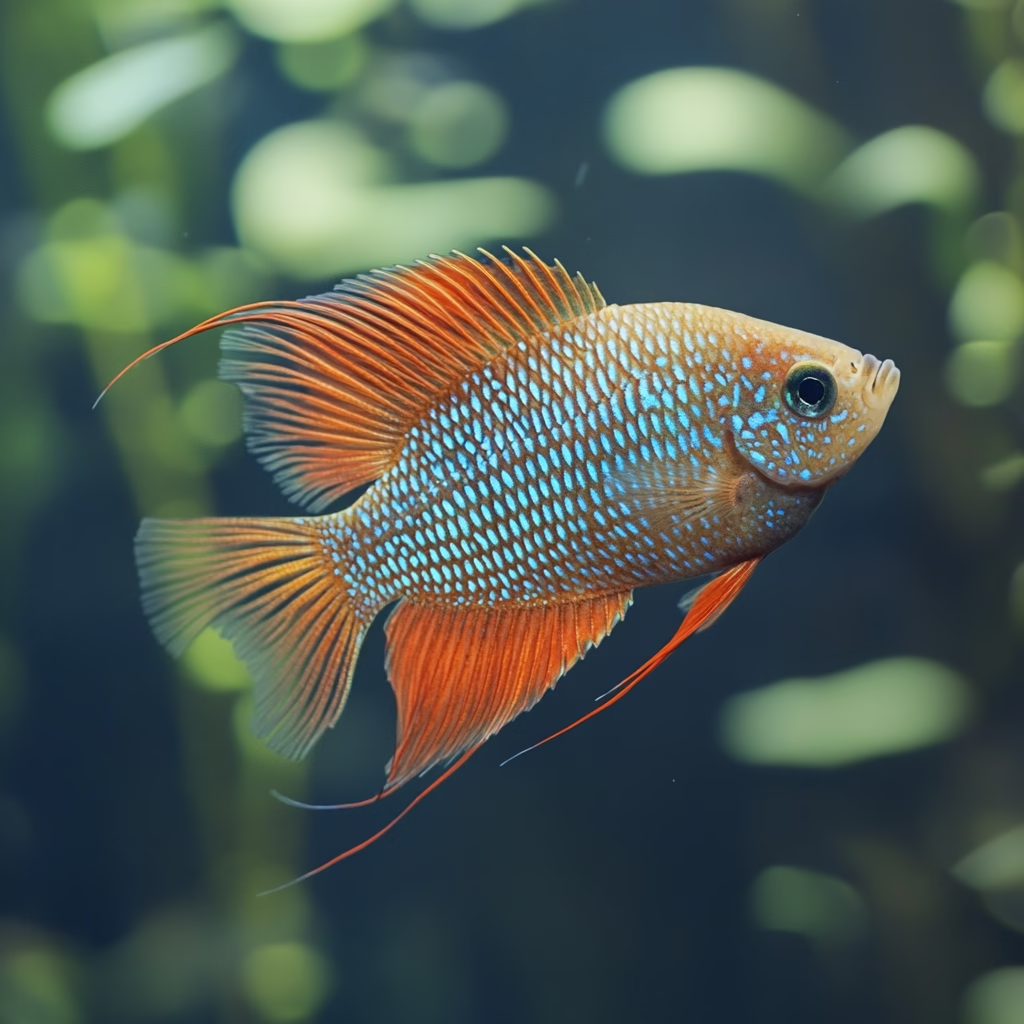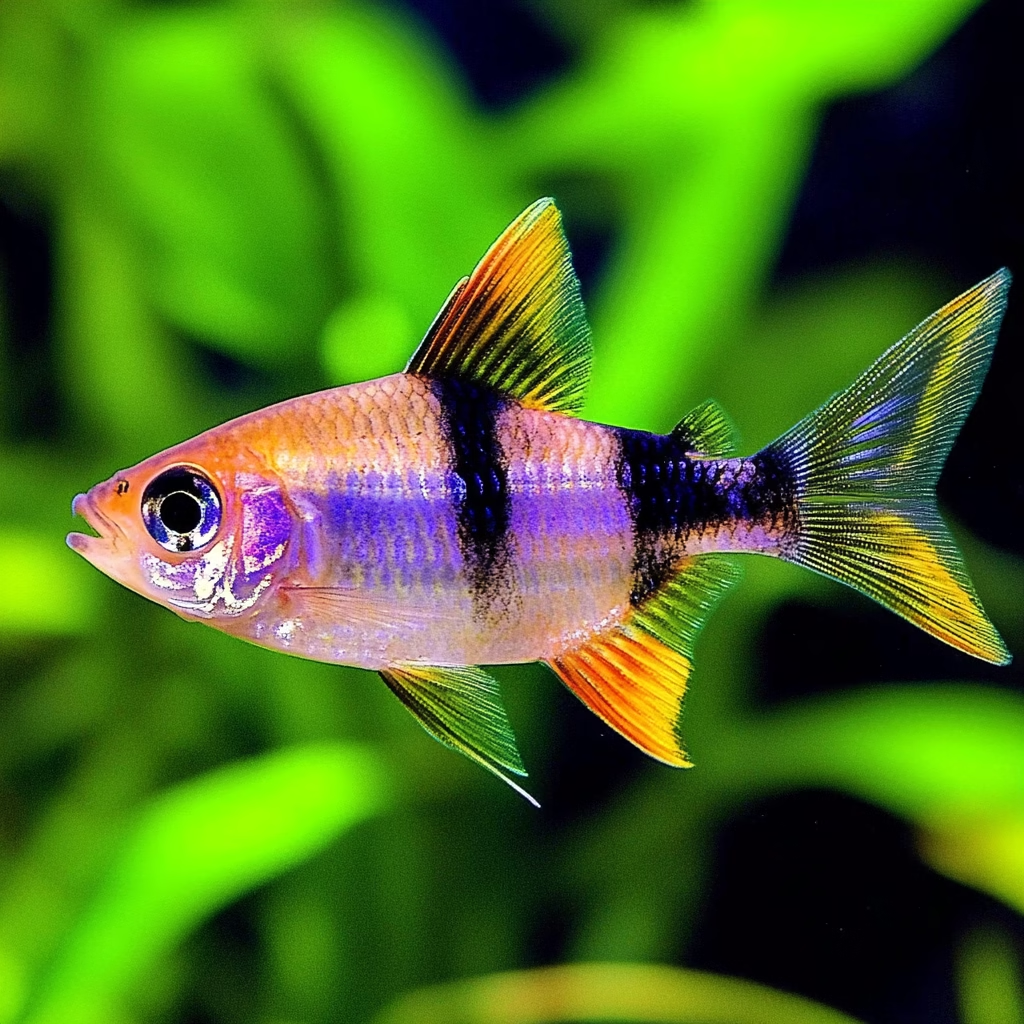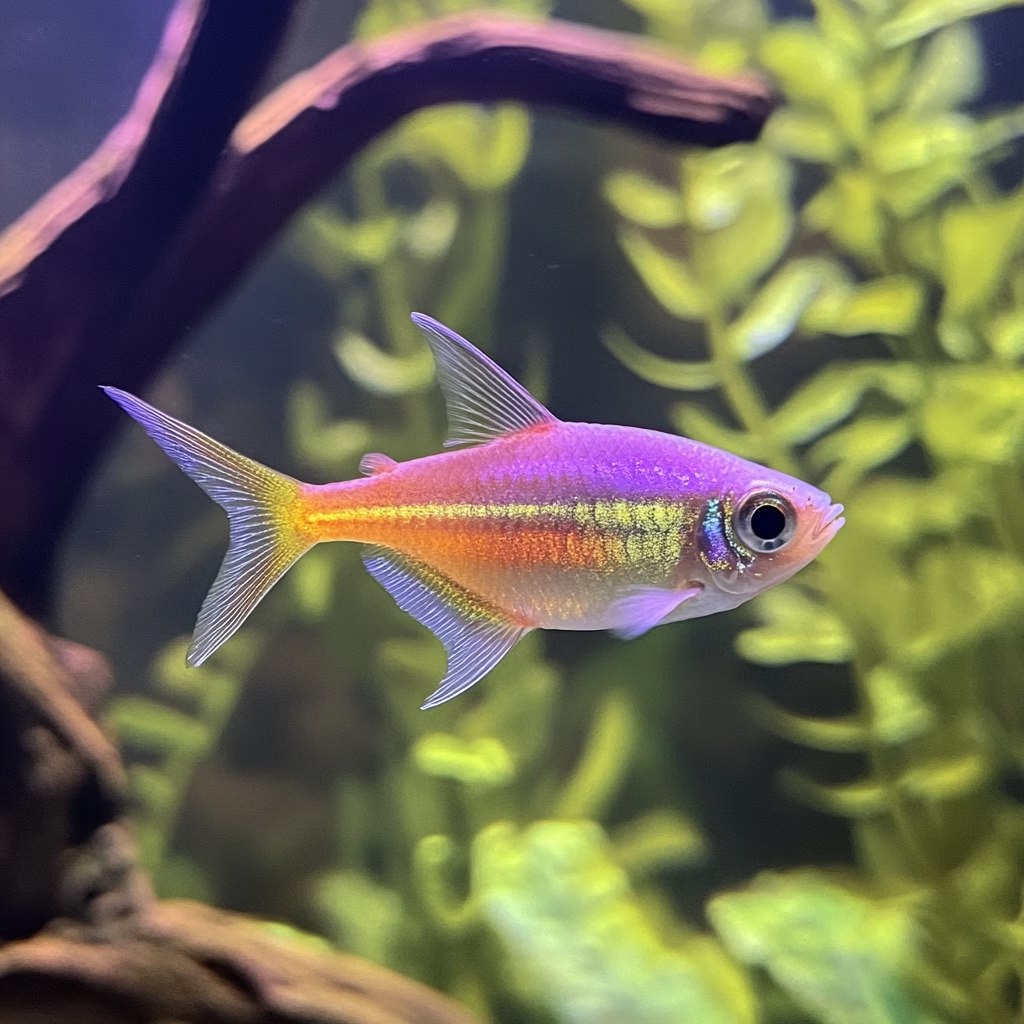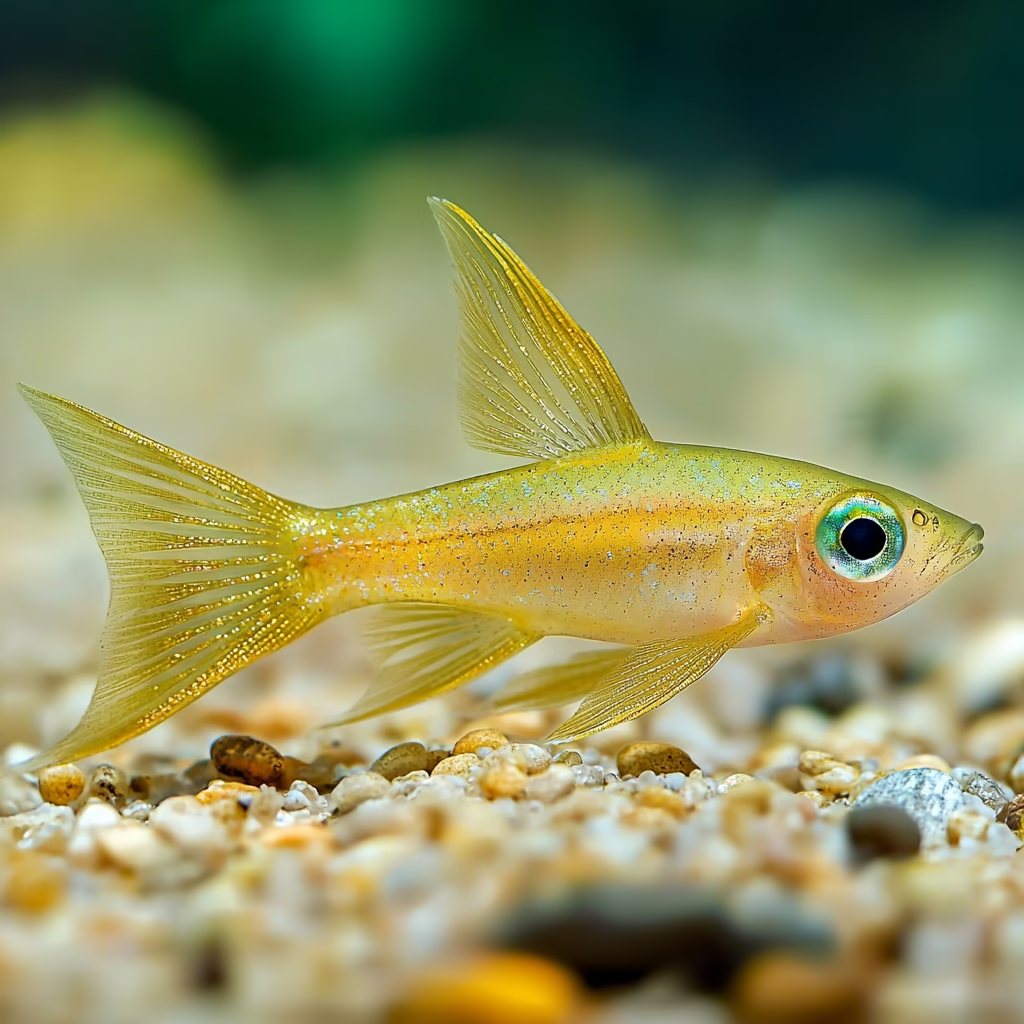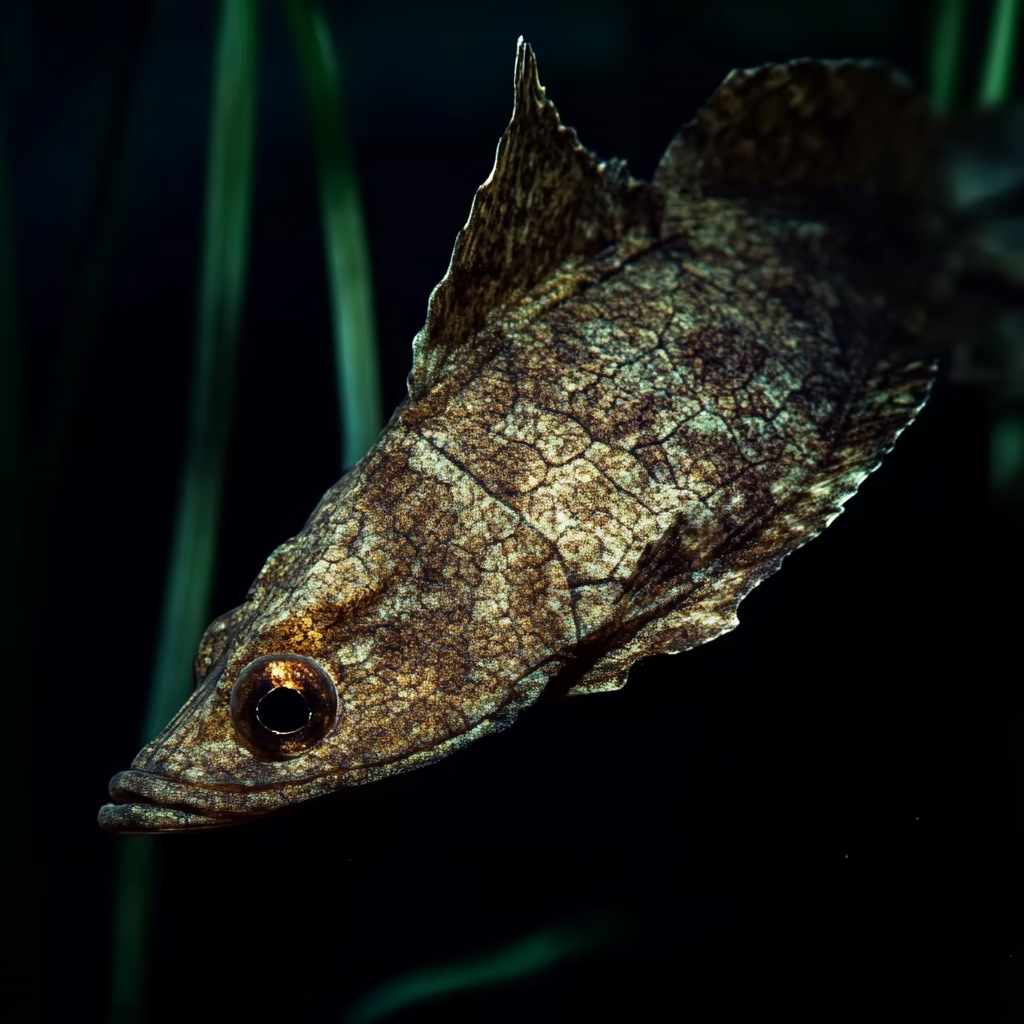Dwarf gouramis (Trichogaster lalius) have captivated aquarium enthusiasts worldwide with their vibrant colors, peaceful temperament, and manageable size. These jewels of freshwater tanks originate from slow-moving waters in India, Bangladesh, and Pakistan, bringing a touch of exotic beauty to home aquariums. This comprehensive guide explores everything you need to know about keeping dwarf gouramis, from their care requirements to breeding tips and troubleshooting common issues.
What Makes Dwarf Gouramis Special?
Dwarf gouramis stand out among freshwater fish for several compelling reasons. Their stunning coloration ranges from the wild-type blue with red-orange vertical stripes to the increasingly popular “flame” variety that showcases brilliant oranges and reds. Males typically display more intense coloration than females, making gender identification relatively straightforward.
Beyond their appearance, dwarf gouramis possess a unique respiratory adaptation: a labyrinth organ. This specialized structure allows them to breathe atmospheric oxygen directly from the water’s surface, supplementing their gill respiration. This evolutionary advantage stems from their native habitats—slow-moving, oxygen-depleted waters where conventional gill breathing alone would be insufficient.
Their modest size, typically reaching only 2-3 inches (5-7.5 cm) in length, makes dwarf gouramis ideal candidates for small to medium-sized community tanks. Their peaceful disposition further enhances their appeal, as they can cohabitate harmoniously with various non-aggressive fish species.
Setting Up the Ideal Dwarf Gourami Tank
Creating the perfect environment for dwarf gouramis involves careful consideration of several key factors:
Tank Size and Setup
While dwarf gouramis can technically survive in tanks as small as 5 gallons, a 10-gallon aquarium represents the minimum recommended size for a pair. For community setups or maintaining multiple males, a 20-gallon tank or larger provides necessary territory space and helps dilute potential aggression.
The tank layout should include:
- Dense vegetation (both rooted and floating plants)
- Plenty of hiding spots created by driftwood, caves, or decorations
- Open swimming areas balanced with planted zones
- A secure lid (dwarf gouramis are known jumpers, especially when startled)
Water Parameters
Dwarf gouramis thrive in water conditions that mirror their natural habitat:
- Temperature: 72-82°F (22-28°C), with 76°F (24.5°C) being ideal
- pH: 6.0-7.5, slightly acidic to neutral
- Hardness: Soft to moderately hard water (5-15 dGH)
- Filtration: Gentle to moderate flow (strong currents stress these fish)
- Weekly water changes of 25-30% to maintain water quality
The addition of Indian almond leaves or small amounts of driftwood can provide beneficial tannins that mimic their blackwater origins while potentially offering health benefits.
Compatible Tank Mates
Choosing appropriate companions for dwarf gouramis requires careful consideration of temperament and space requirements. Ideal tank mates include:
- Small, peaceful tetras (neon, cardinal, ember)
- Rasboras (harlequin, chili)
- Corydoras catfish
- Peaceful bottom dwellers like kuhli loaches
- Small peaceful gouramis (honey gouramis)
- Appropriately sized shrimp and snails
Avoid housing dwarf gouramis with fin-nipping species, highly active swimmers that may stress them, or similarly colored fish that might trigger territorial responses.
Feeding Your Dwarf Gourami: Nutrition Essentials
Dwarf gouramis are omnivores with a preference for small, meaty foods supplemented by plant matter. A varied diet ensures optimal health, coloration, and immunity:
Daily Nutrition
A balanced feeding regimen should include:
- High-quality flake or pellet food formulated for tropical fish
- Frozen or live foods (bloodworms, brine shrimp, daphnia)
- Vegetable matter (blanched spinach, zucchini, specialized algae wafers)
Feed small portions 2-3 times daily, offering only what they can consume in 2-3 minutes. Overfeeding leads to poor water quality and potential health issues.
Enhancing Colors Through Diet
The vibrant hues of dwarf gouramis can be intensified through their diet. Foods rich in natural color enhancers such as astaxanthin (found in krill, shrimp, and specific commercial foods) can heighten their red and orange pigmentation. Similarly, foods containing spirulina can enhance blue coloration.
Dwarf Gourami Behavior and Social Dynamics
Understanding the social structure and behavioral patterns of dwarf gouramis helps create a harmonious aquarium environment:
Male-to-Male Interactions
Males establish and defend territories, particularly during breeding season. While generally peaceful, they may display aggression toward similarly colored males through:
- Flaring gill covers
- Display of extended fins
- Side-by-side swimming contests
- Occasional physical confrontations
Providing ample space and visual barriers through plants and decorations minimizes conflict by breaking line of sight between territorial males.
Courtship and Pair Bonding
Dwarf gourami courtship involves elaborate displays where males showcase their colors through:
- Fin extension and vibration
- Side-to-side dancing movements
- Construction of bubble nests at the water’s surface
- Gentle pursuing of females
Once a pair bond forms, the male often remains protective of both his chosen female and their territory.
Breeding Dwarf Gouramis: A Rewarding Challenge
Breeding dwarf gouramis offers a fascinating glimpse into their natural reproductive behaviors. Success requires proper conditioning and environment:
Pre-Breeding Conditioning
Before attempting to breed dwarf gouramis:
- Select healthy, mature specimens (8-12 months old)
- Condition them with protein-rich live foods for 1-2 weeks
- Maintain excellent water quality through regular changes
- Gradually increase water temperature to around 80°F (26.5°C)
The Breeding Process
A dedicated breeding tank (10+ gallons) should feature:
- Half-filled water level (4-6 inches)
- Dense floating plants (water sprite, frogbit, or artificial alternatives)
- Gentle filtration or none (sponge filters prevent fry being pulled into intakes)
- Dim lighting to reduce stress
When ready to spawn, the male constructs an elaborate bubble nest using his saliva to create sticky bubbles at the water’s surface, often anchored to floating plants. After courtship, the female releases eggs while the male fertilizes them externally, then collects the eggs in his mouth and places them in the bubble nest.
Fry Care
Once spawning completes:
- Remove the female to prevent predation (males typically guard the nest)
- After eggs hatch (24-36 hours), consider removing the male as well
- Feed newly hatched fry with infusoria, liquid fry food, or commercially available fry food
- Graduate to newly hatched brine shrimp as they grow
- Perform gentle water changes (siphoning from the bottom to avoid disturbing fry)
Growth rates vary, but under optimal conditions, young dwarf gouramis reach juvenile stage within 4-6 weeks.
Health Concerns and Disease Prevention
Dwarf gouramis face several health challenges, with Dwarf Gourami Disease (DGD) representing the most significant concern:
Dwarf Gourami Disease
This viral infection, caused by a strain of iridovirus, specifically targets dwarf gouramis and shows symptoms including:
- Loss of coloration
- Lethargy and loss of appetite
- Swelling of the abdomen or other body parts
- Sores or lesions on the body
- Eventual organ failure
Unfortunately, DGD has no known cure. The best prevention involves:
- Purchasing fish from reputable sources
- Quarantining new specimens for 3-4 weeks
- Maintaining optimal water conditions
- Avoiding stress through proper husbandry
Other Common Health Issues
Beyond DGD, dwarf gouramis may experience:
- Fin rot (bacterial infection affecting fins)
- Ich (white spot disease)
- Velvet (golden dust appearance on scales)
- Swim bladder disorders (affecting buoyancy)
Most of these conditions respond well to appropriate treatments when caught early. Regular observation of your fish, coupled with proactive water quality management, represents the best preventative approach.
Common Questions About Dwarf Gouramis
How long do dwarf gouramis live?
With proper care, dwarf gouramis typically live 4-6 years in captivity. Some specimens may reach 7 years under optimal conditions.
Why is my dwarf gourami staying at the top of the tank?
This behavior might indicate:
- Natural labyrinth breathing (normal periodic surface visits)
- Oxygen deficiency in the water
- Swim bladder issues
- Stress from water quality or tankmate harassment
Can dwarf gouramis live with bettas?
While both species possess labyrinth organs and come from similar regions, housing dwarf gouramis with bettas is generally not recommended. Both species can be territorial, and their similar appearances and behaviors may trigger aggression, particularly in smaller tanks.
How can I tell male and female dwarf gouramis apart?
Sexual dimorphism in dwarf gouramis is quite pronounced:
- Males display vibrant coloration with distinct red/orange stripes on a blue background
- Females exhibit more subdued silver-blue coloration with faint vertical stripes
- Males have longer, more pointed dorsal fins
- Females typically show a rounder body shape, especially when mature
Why isn’t my male dwarf gourami building a bubble nest?
Several factors might inhibit nest-building behavior:
- Water movement disrupting surface tension
- Lack of suitable anchoring plants or structures
- Suboptimal water parameters
- Young age or poor health
- Absence of females to trigger breeding behavior
Conclusion: The Enduring Appeal of Dwarf Gouramis
Dwarf gouramis continue to enchant aquarists worldwide with their striking appearance, fascinating behaviors, and relatively straightforward care requirements. Their labyrinth organ represents an evolutionary marvel, while their breeding behaviors provide endless fascination for hobbyists of all experience levels.
Whether maintained in a species-specific showcase or as centerpiece fish in a community aquarium, dwarf gouramis reward their keepers with vibrant displays and engaging personalities. By providing appropriate care, nutrition, and habitat, aquarists can enjoy these jewel-like fish for years while contributing to the preservation of these increasingly popular aquatic pets.
Through responsible ownership, including careful sourcing to minimize the impact of Dwarf Gourami Disease, enthusiasts can ensure these beautiful fish remain accessible for generations of aquarium hobbyists to come.

